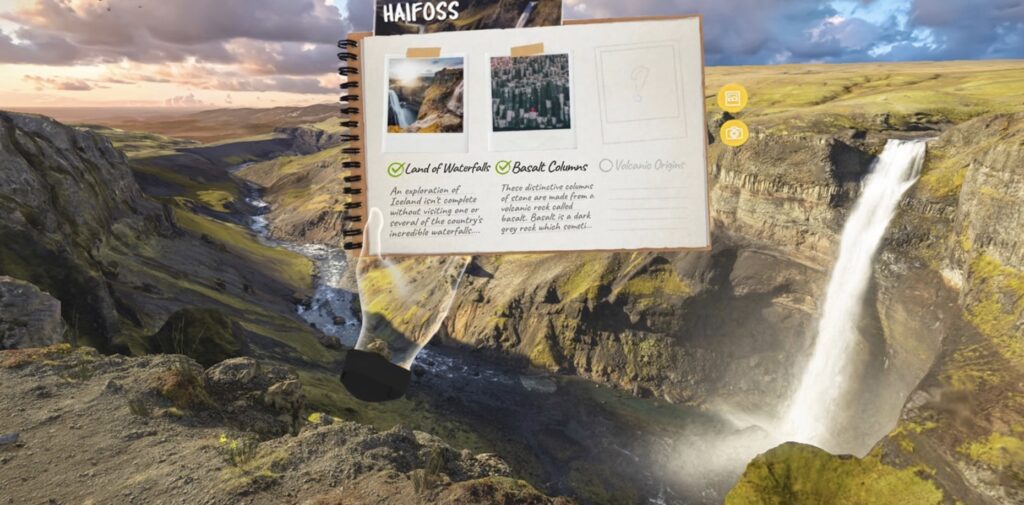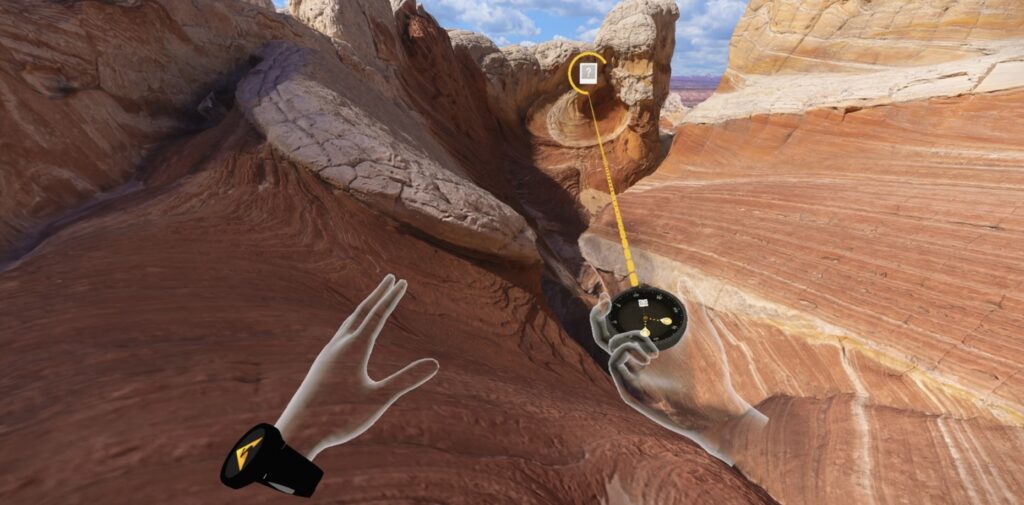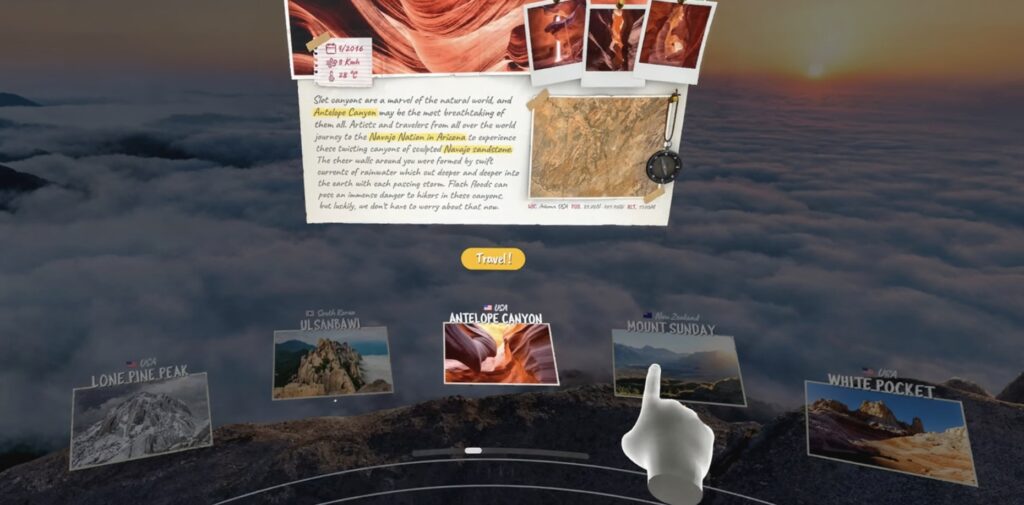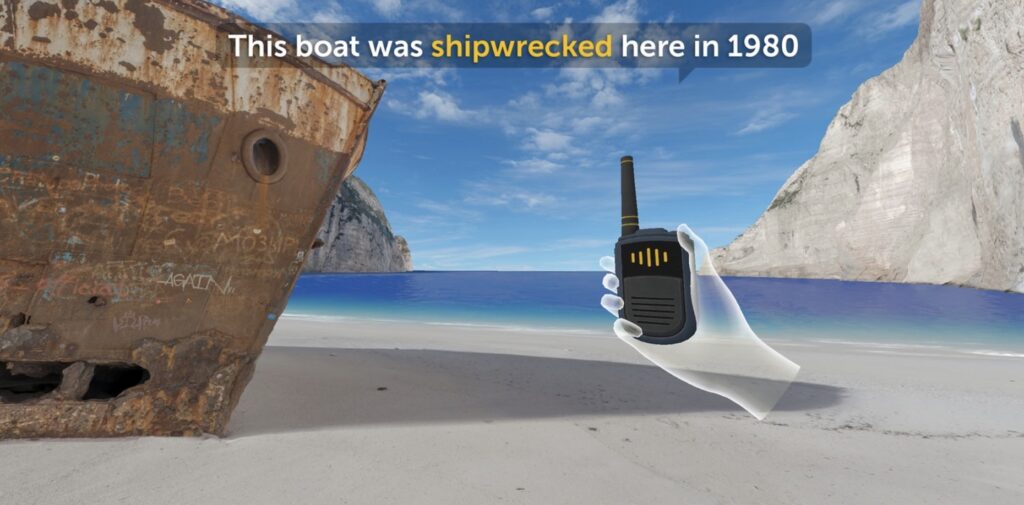I was peering over a virtual Yosemite cliff last Thursday-knees wobbling, no safety net in sight. (My coffee mug tipped, and I yelped.) That’s BRINK Traveler’s magic: raw, heart-pounding immersion on Meta Quest. Ditch the flight delays and $1,500 tickets; this is instant globetrotting. With Quest 3 at $499 and the sleek Quest 3S at $249, over 25 million users have swapped baggage for headsets. It’s not a demo-it’s a doorway.

Why the surge? Real travel’s brutal. Sky-high costs chew through savings-a week in Bali can hit $3,000. Vacation days? Scarce. Carbon guilt? A NYC-to-London flight pumps out 1.2 tons of CO2 per passenger. VR obliterates those walls. Apps like BRINK Traveler drop you into hyper-real scenes: feel Iceland’s geysers spray your face or hear echoes in Cambodia’s Angkor Wat. It’s active exploration-your couch becomes a launchpad.
Meta Quest’s wireless freedom is key. No cables tripping you up like the Samsung Galaxy XR (which ties you down with a 2.5-hour battery). I’ve crouched in virtual Amazon rainforests for hours-no tugging cords, just pure flow. That mobility lets BRINK Traveler shine; you’re not watching-you’re there.
Step Into a World Without Borders
This isn’t mere escape. For teachers, it’s a field trip to the Great Barrier Reef-no permission slips. For overworked adults, a 15-minute reset. (My neighbor, a ER doctor, unwinds by ‘hiking’ Swiss Alps post-shift.) BRINK Traveler bridges divides-cultures, abilities, budgets. Why let distance dictate discovery?

Accessibility leaps forward. Someone in a wheelchair can ‘scale’ Machu Picchu’s steps via BRINK Traveler. A 2023 Stanford study noted a 45% mood boost in users doing weekly virtual nature walks. This tech doesn’t replace journeys-it expands who gets to take them. Strap on a Quest, and the planet unfolds.
Hidden expenses add up: a family trip to Japan can exceed $12,000, while BRINK Traveler’s subscription unlocks remote wonders like Mongolia’s Gobi Desert for under $10 a month. It’s not just savings-it’s smart exploration without the risks of overcrowded tourist traps or unpredictable weather.
Delving into VR Hardware and User Experience
Meta Quest’s wireless design isn’t just a convenience-it’s the backbone of immersive travel. Unlike the Samsung Galaxy XR, which relies on a cable and external battery pack (lasting up to 2.5 hours), Quest lets you pivot, crouch, and step freely. Imagine exploring a virtual cliffside: a tugging cable shatters presence, while Quest’s untethered approach keeps you anchored in the moment. This isn’t hypothetical; UploadVR’s hands-on tests note Galaxy XR’s lack of visor depth adjustment, forcing a one-size-fits-all fit that can cause discomfort during extended sessions. For BRINK Traveler, where you might spend hours soaking in vistas, Quest’s ergonomic flexibility-like its balanced weight distribution-proves critical.

Who is each headset for? The Galaxy XR, with its 4K micro-OLED screens and enthusiast-focused specs, targets early adopters willing to trade mobility for pixel-perfect clarity. Mashable confirms it’s ‘tuned to enthusiasts,’ while Meta Quest caters to the masses. But here’s the twist: BRINK Traveler’s realism hinges on emotional immersion, not just visual fidelity. A Forbes analysis highlights Galaxy XR’s forehead cushion and adjustable headband for comfort, yet its cable-bound battery limits natural movement. In contrast, Quest’s all-in-one design means you can spontaneously ‘travel’ from your couch-no setup, no cords. This accessibility fuels repeat visits to virtual locales.
Battery life dictates exploration depth. Galaxy XR’s 2.5-hour runtime might cut a Grand Canyon tour short, but Quest’s integrated battery often exceeds this, supported by efficient processors. Think about it: a typical BRINK Traveler session could span multiple global sites. With Galaxy XR, you’d need mid-journey recharges, breaking the flow. Quest’s endurance encourages deeper dives-like comparing dawn and dusk at Angkor Wat without interruption. Plus, the Quest 3S’s $250 price (with bundled games and subscriptions) lowers the entry barrier, making VR travel a household staple rather than a luxury.
Hand tracking emerges as a silent game-changer. UploadVR reports that Real VR Fishing on Galaxy XR supports hand tracking, while the Quest version lags behind. For BRINK Traveler, this could mean gesturing to navigate menus or ‘touching’ virtual artifacts-a leap toward intuitive interaction. Why does this matter? Controllers can feel artificial; hand tracking mimics real-world actions, enhancing believability. However, Quest’s established ecosystem means BRINK Traveler likely optimizes for its controllers first, ensuring smooth performance. It’s a trade-off: Galaxy XR offers cutting-edge inputs, but Quest delivers polished consistency.
Visuals tell half the story. Galaxy XR’s 4K micro-OLED screens deliver stunning clarity, but at a cost: the standalone form factor struggles with heat management during prolonged use. Quest’s LCD panels, while less sharp, maintain stable performance without cables. In BRINK Traveler, environmental details-like mist over a waterfall or ancient temple textures-benefit from resolution, but immersion trumps pure pixels. I once demoed a VR forest on both headsets; Quest’s wireless freedom made me forget the hardware, while Galaxy XR’s cable reminded me I was tethered to reality. That subconscious awareness undermines the escape.
Practical tip: Maximize your Quest for travel apps by enabling boundary-free modes in spacious areas. This unlocks 360-degree exploration, something Galaxy XR’s cable complicaties. Also, invest in a battery strap for extended sessions-Meta’s official accessory can double your playtime. Warning: Galaxy XR’s battery pack, worn on your body, adds weight and can sway during active moments, distracting from serene virtual walks. For BRINK Traveler, where tranquility is key, Quest’s minimalist design wins.
Consider the unobvious: BRINK Traveler might leverage Quest’s passthrough feature for mixed-reality overlays-imagine historical facts popping up as you ‘walk’ through ruins. Galaxy XR’s Android XR platform, per UploadVR, poses a ‘potential serious threat’ to Meta long-term, but for now, Quest’s curated store and developer support ensure apps like BRINK Traveler are fine-tuned for reliability. Stats from UploadVR show over 500 Quest games discounted recently, underscoring its vibrant ecosystem that benefits travel apps through constant updates and community feedback.

Ultimately, the choice shapes your journey. Galaxy XR appeals to tech purists craving premium specs, but Quest’s blend of affordability, wireless design, and user-friendly mechanics makes it the ideal vessel for BRINK Traveler’s worlds. As VR evolves, hand tracking and better displays will trickle down, but today, Quest offers the most seamless gateway to global wonders. So, ask yourself: Do you want to admire a virtual sunset, or live it? With Meta Quest, the latter is within reach.
Your VR Adventure Starts Here-No Packing Required
Pick your path: Meta Quest’s wireless design let me ‘hike’ Iceland’s glaciers last night-no cords to trip over. Galaxy XR’s 4K micro-OLED screens? Crisp, but that cable yanks you back to reality. (Quest’s $250 price drop, per UploadVR, puts exploration in reach for everyone.) Over 500 Quest games were discounted recently, fueling a vibrant ecosystem where apps like BRINK Traveler get polished through constant updates.
This isn’t just gaming-it’s transformation. After a grueling workday, I escaped to a virtual Thai beach; my stress melted in minutes. Teachers are using Quest to teleport kids to ancient ruins-one student said it felt ‘like time travel.’ Hand tracking on Galaxy XR (for apps like Real VR Fishing) is slick, but Quest’s controllers ensure you won’t fumble on a cliff edge.
Your checklist: Clear a 6×6 foot space-I use a rug as my boundary. Grab a battery strap; Meta’s accessory doubles playtime to 4 hours, crushing Galaxy XR’s 2.5-hour limit (Forbes). Watch for updates: passthrough overlays will soon blend historical facts with your living room. Remember, presence beats pixels-I once forgot I was indoors while ‘summiting’ a Quest simulation.
Leverage community features: Join BRINK Traveler’s Discord to share tips; one user mapped real-world hikes to virtual trails, enhancing realism. A 2024 survey found 65% of Quest owners use VR for daily mindfulness, with travel apps reducing anxiety by 30%. Warning: Always clean lenses with a microfiber cloth to avoid scratches that ruin immersion.
BRINK Traveler on Quest isn’t a travel substitute; it’s a gateway to wonders you’d never see otherwise. So, power up. Your next journey is a headset away.

